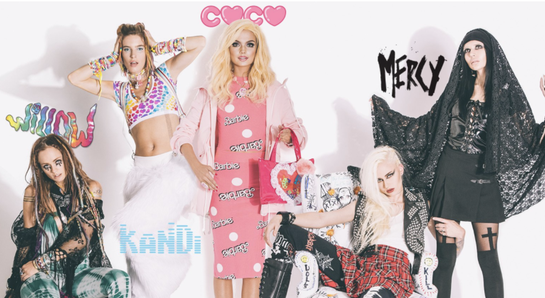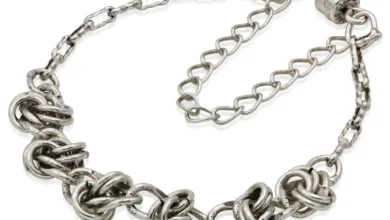Exploring the Dolls Kill Controversy: Brand’s Impact on Fashion and Culture

In the realm of fashion and e-commerce, few brands have stirred up as much controversy and intrigue as Dolls Kill. With its bold aesthetic, edgy designs, and unapologetically rebellious ethos, Dolls Kill has captivated a diverse audience of fashion enthusiasts, influencers, and trendsetters. However, beneath the surface allure lies a complex tapestry of debates surrounding cultural appropriation, body positivity, and ethical sourcing practices. In this extensive analysis, we delve deep into the Dolls Kill phenomenon, examining its evolution, controversies, and lasting impact on the fashion landscape.
The Rise of Dolls Kill: From Niche Boutique to Fashion Powerhouse
Founded in 2011 by Shoddy Lynn and Bobby Farahi, Dolls Kill emerged as a rebellious antidote to mainstream fashion conventions. Inspired by underground subcultures, rave aesthetics, and DIY ethos, the brand quickly gained traction among alternative fashion enthusiasts seeking unique, statement-making pieces that defied traditional norms.
Dolls Kill’s strategic embrace of social media platforms, influencer marketing, and viral marketing tactics propelled it to cult status, attracting a devoted following of “Dolls” who embraced the brand’s ethos of self-expression and individuality. Through a combination of provocative imagery, boundary-pushing designs, and savvy digital marketing, Dolls Kill carved out a distinctive niche in the highly competitive fashion landscape, solidifying its position as a force to be reckoned with.
Controversies and Criticisms: Navigating the Ethical Quagmire
Despite its meteoric rise to prominence, It has not been immune to controversy. From accusations of cultural appropriation to concerns about ethical sourcing practices, the brand has faced a barrage of criticisms that have sparked impassioned debates within fashion circles and beyond.
One of the most contentious issues surrounding Dolls Kill is its appropriation of diverse cultural influences without proper attribution or respect for the communities from which they originate. Critics argue that the brand’s use of culturally significant symbols, motifs, and aesthetics perpetuates harmful stereotypes and diminishes the cultural heritage of marginalized communities.
Furthermore, It has come under fire for its inconsistent stance on body positivity and inclusivity. While the brand champions diversity and self-expression in its marketing campaigns, some argue that its sizing options and marketing imagery perpetuate unrealistic beauty standards and alienate customers who do not conform to traditional notions of beauty.
Moreover, It has faced scrutiny over its supply chain practices, with allegations of unethical labor practices and environmental degradation tarnishing its reputation. Critics point to reports of sweatshop labor, exploitative working conditions, and unsustainable manufacturing processes as evidence of the brand’s disregard for social responsibility and ethical integrity.
Response and Reckoning: Charting a Path Forward
In response to mounting criticisms and public outcry, Dolls Kill has taken steps to address some of the issues plaguing its reputation. The brand has implemented initiatives aimed at promoting diversity, inclusivity, and ethical sourcing practices, including collaborations with independent designers and initiatives to support marginalized communities.
However, the effectiveness of these efforts remains a subject of debate, with many questioning the sincerity of Dolls Kill’s commitments to social responsibility and ethical accountability. While some view the brand’s actions as a positive step towards positive change, others remain skeptical of its motivations and question whether meaningful change can be achieved within the confines of a profit-driven business model.
As Dolls Kill grapples with the complexities of its reputation and impact on fashion culture, it faces a critical juncture in its evolution. To regain public trust and credibility, the brand must demonstrate a genuine commitment to addressing the root causes of its controversies, including cultural appropriation, body positivity, and ethical sourcing practices.
The Legacy of Dolls Kill: Lessons Learned and Future Trends
Despite the controversies that have surrounded it, It has undeniably left an indelible mark on the fashion landscape. From its boundary-pushing designs to its bold marketing strategies, the brand has challenged conventional notions of beauty, fashion, and identity, inspiring a generation of fashion enthusiasts to embrace their individuality and express themselves without inhibition.
However, the Dolls Kill saga also serves as a cautionary tale about the perils of unchecked capitalism and the commodification of subcultural identities. As fashion consumers become increasingly aware of the ethical implications of their purchasing decisions, brands like Dolls Kill must adapt to meet evolving demands for transparency, accountability, and social responsibility.
Looking ahead, the future of Dolls Kill and similar brands hinges on their ability to reconcile their commercial interests with the ethical imperatives of a socially conscious consumer base. By embracing principles of inclusivity, sustainability, and ethical integrity, Dolls Kill has the opportunity to transform its controversies into catalysts for positive change, setting a new standard for ethical fashion in the digital age.
Conclusion: The Dolls Kill Dilemma and the Future of Fashion
This controversy epitomizes the inherent tensions and contradictions within the fashion industry, where creativity and innovation often collide with ethical considerations and social responsibility. As consumers, influencers, and industry insiders grapple with the complexities of fashion culture in the digital age, the Dolls Kill saga serves as a potent reminder of the power of fashion to shape perceptions, challenge norms, and provoke discourse.
Ultimately, the legacy of Dolls Kill will be defined not only by its aesthetic innovations and marketing prowess but also by its willingness to confront the ethical dilemmas and cultural controversies that have defined its trajectory. Whether Dolls Kill can transcend its controversies and emerge as a beacon of ethical fashion remains to be seen, but one thing is certain: the Dolls Kill dilemma will continue to spark dialogue, inspire reflection, and shape the future of fashion for years to come.



